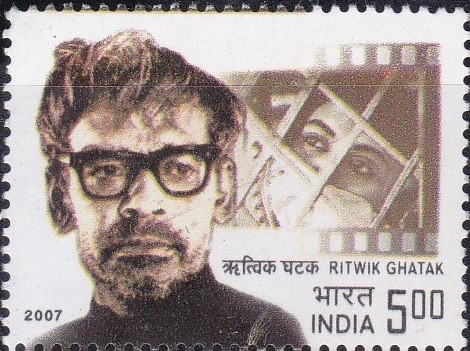
Ritwik Kumar Ghatak
A commemorative postage stamp on the great Bengali Film Director, Ritwik Kumar Ghatak :
 Issued by India
Issued by India
Issued on Dec 31, 2007
Issued for : India Post is proud to release a postage stamp on Ritwik Ghatak.
Credits :
Stamp & FDC : Sankha Samanta
Cancellation : Alka Sharma
Type : Stamp, Mint Condition
Colour : Multi color
Denomination : 500 Paise
Stamps Printed : 0.4 Million
Printing Process : Photogravure
Printer : India Security Press, Nasik
Name : Ritwik Kumar Ghatak
Born on Nov 14, 1925 at Dhaka, East Bengal, British India [now in Bangladesh]
Died on Feb 6, 1976 at Calcutta, West Bengal, India
About :
- Ritwik Ghatak has come to be regarded as one of the greatest figures in the history of Indian Cinema. Though he made only eight feature and several short films, his brilliant and abrasive films are considered to be among the most revolutionary achievements in contemporary Indian cinema. Ritwik Ghatak was born in Dhaka in East Bengal (now Bangladesh) on 14.11.1925. He belonged to an illustrious family. His father Suresh Chandra Ghatak was a district magistrate and also a poet and playwright. Mother’s name was Indubala Devi. He was their 11th and youngest child. He and his family moved to Kolkata just before millions of other refugees from East Bengal began to flood into the city, fleeing the catastrophic 1943 famine and the Partition of India 1947.
- Identification with the tide of refugees was to define his practice, providing an overriding metaphor for cultural dismemberment and exile that unified his subsequent creative work.
- In 1948, Ghatak wrote the first play Kala Sayar (The Dark Lake), and participated in a revival of the landmark play Nabanna. In 1951, Ghatak joined the Indian People’s Theatre Association (IPTA). He wrote, directed and acted in plays and translated Bertolt Brecht and Gogol into Bengali. In 1957, he wrote and directed his last play Jwala (The Burning).
- Ghatak entered film industry with Nemai Ghosh’s Chinnamul (1950) as an actor and assistant director. Chinnamul was followed two years later by Ghatak’s first completed film Nagarik (1952), both major break-through for the Indian cinema. Ghatak’s early work sought theatrical and literary precedent in bringing together a documentary realism, a remarkable stylized performance often drawn from the folk theatre, and a Brechtian use of the filmic apparatus.
- The product of an early involvement in politics and people’s theatre, Ghatak, as a filmmaker, was bent on wedding his political activism with cultural content as he fashioned popular form melodrama, songs, dances – into appropriate vehicles for radical political expression. His films are almost all veiled autobiography. Ghatak came of age during the convulsions of the 1940s – World War II, the terrible “man-made famine” of 1944, the communal violence that came with independence, and especially the partition of Bengal, which obsessed him all his life. His subjects are almost invariably chosen from among the uprooted and the dispossessed; parentless children, homeless families, disoriented refugees, and the petit bourgeoisie, economically broken by their exile. Yet, there is a glimmer of hope in even the darkest movements. He directed eight full-length films. His best known films were Meghe Dhaka Tara (The Cloud-Capped Star) (1960), Komal Gandhar (E-Flat) (1961) and Subarnarekha (1962), a trilogy based in Kolkata and addressing the condition of refugee-hood. His other feature films were Ajantrik (The Unmechanical, The Pathetic Fallacy) (1958), Bari Theke Paliye (The Runaway) (1959), Titash Ekti Nadir Naam (A River called Titash) (1973), Jukti Takko Aar Gappo (Reason, Debate and a Story) (1974). Short films and documentaries made by Ghatak are The Life of Adivasis (1955), Places of Historic Interest in Bihar (1955), Scientists of Tomorrow (1967), Ye Kyun (Why/The Question) (1970), Amar Lenin (My Lenin) (1970), Puruliar Chhau (The Chhau Dance of Purulia) (1970) and Durbar Gati Padma (The Turbulent Padma) (1971). However, despite widespread critical acclaim, Ritwik Ghatak’s films are not easily available.
- Ghatak moved briefly to Pune in 1966, where he taught at the Film and Television Institute of India (FTII). He died on 06.02.1976. Ritwik Ghatak’s cinema is without any parallel in Indian film history. Jacob Levich has remarked that there was a kind of impudence in Ghatak’s ceaseless tinkering with film language. His films are ragged, provisional, intensely personal, yet epic in shape, scope, and aspirations. Satyajit Ray, a contemporary of Ghatak wrote in the foreword to a collection of Ghatak’s articles on cinema titled “Cinema and I”, “Ritwik was one of the few truly original talents in the cinema this country has produced. Nearly all his films are marked by an intensity of feeling coupled with an imaginative grasp of the technique of film making. As a creator of powerful images in an epic style he was virtually unsurpassed in Indian cinema.”
- Text : Based on material provided by the proponent.


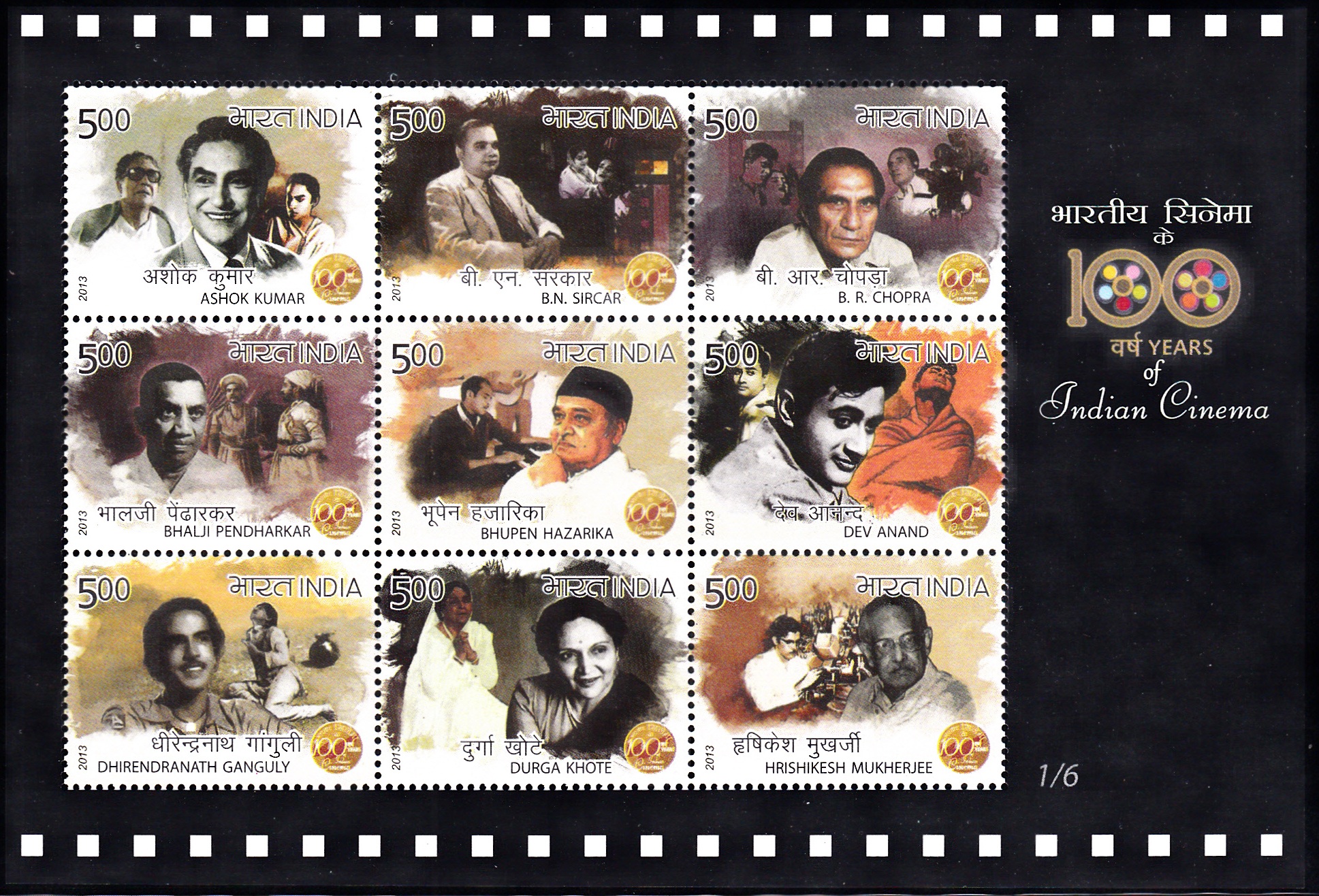
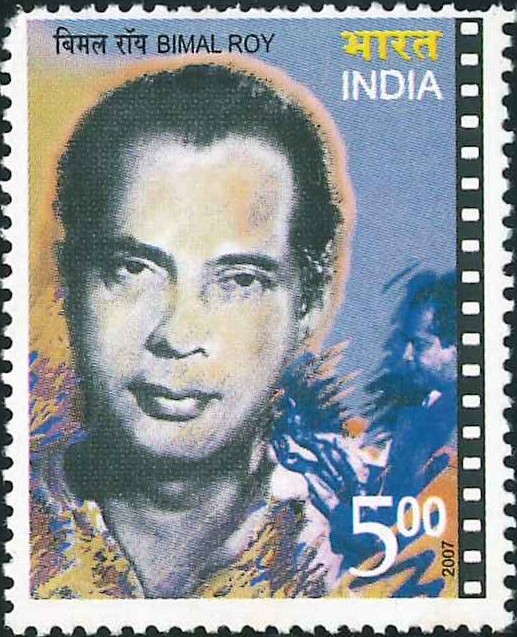

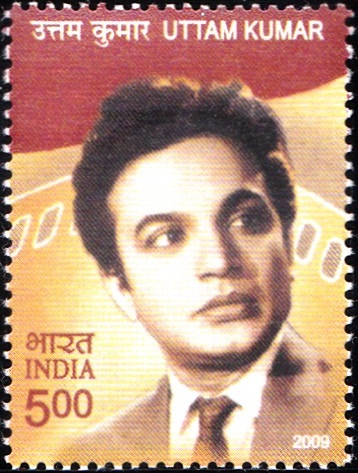
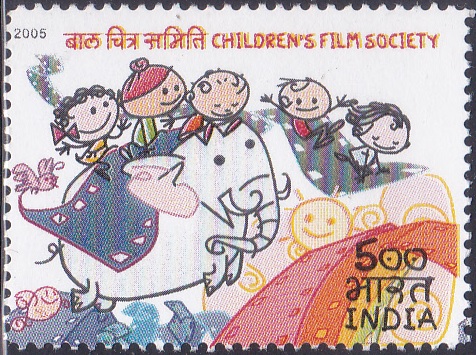

[…] inspirational for a young and restless generation searching for a cause, among them Satyajit Ray, Ritwik Ghatak, and Mrinal Sen. The film was remade by him in Hindi as ‘Humrahi’, and was to become a clarion […]